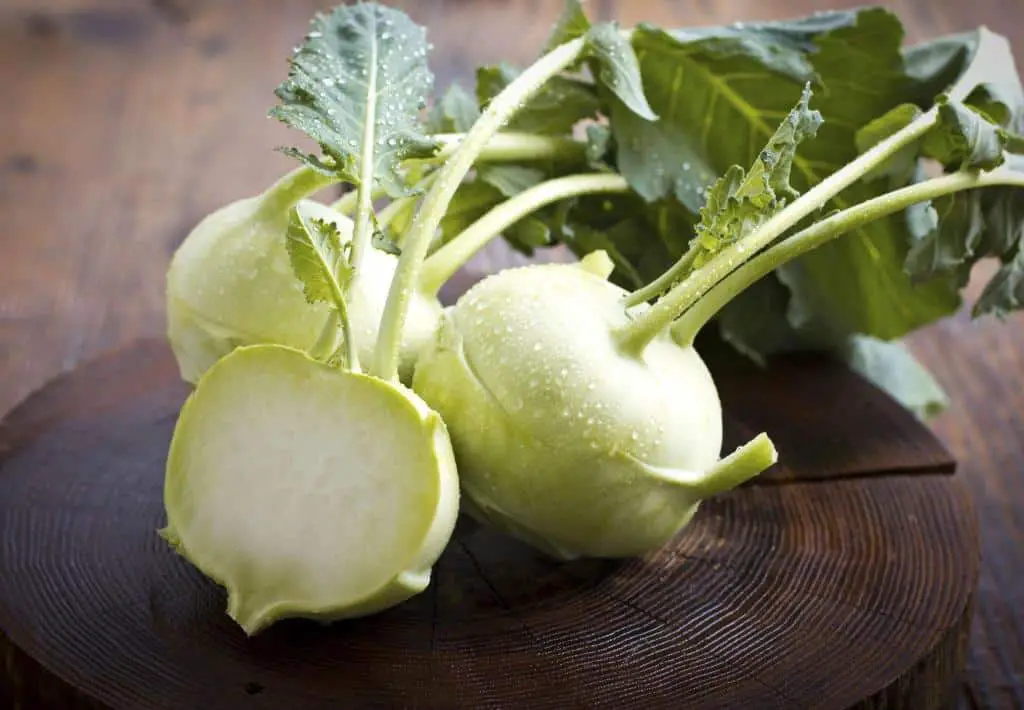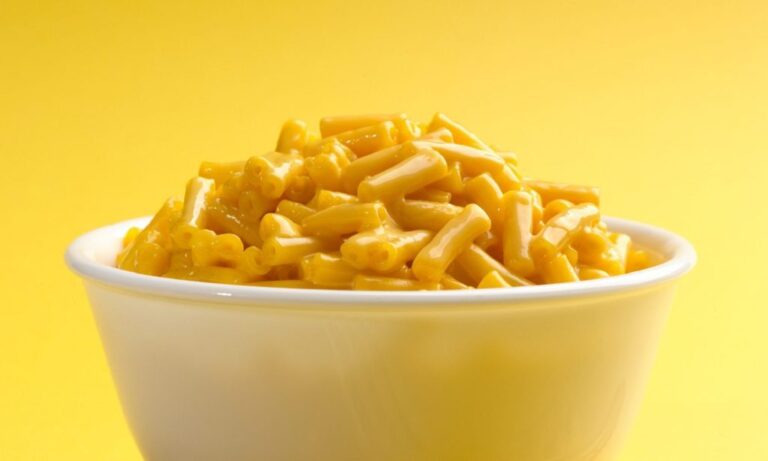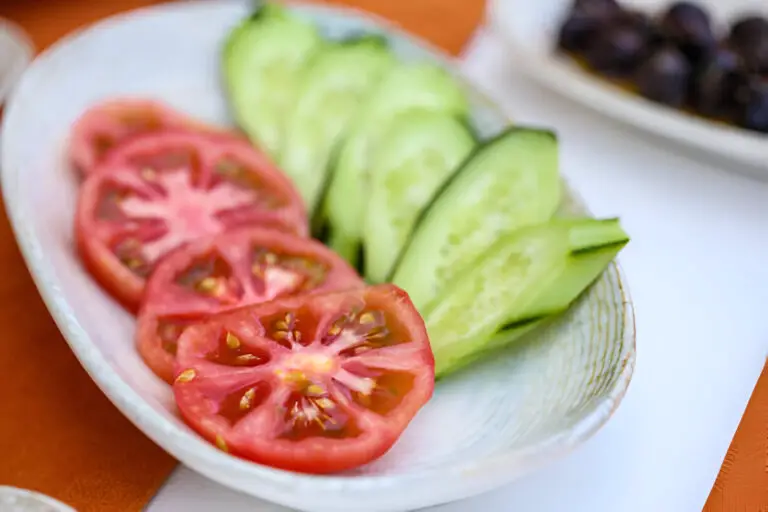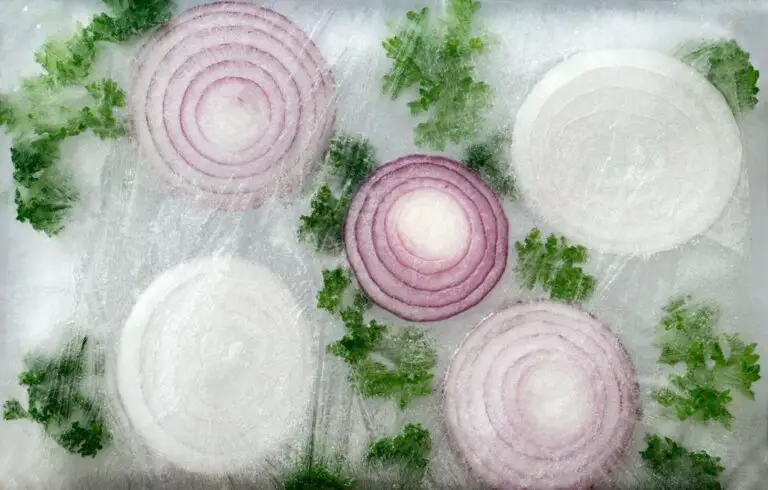Can You Eat Kohlrabi Skin? Is Kohlrabi Peel Edible and Safe to Eat?

Kohlrabi, with its unique name and appearance, often raises questions about its edibility, especially when it comes to its peel. Step into the intriguing world of kohlrabi, where questions about its enigmatic skin have sparked curiosity and appetite alike. Picture this: a bulbous, slightly alien-looking vegetable with a taste that teeters between sweetness and crispness.
Yet, amidst its unique allure, one query emerges: can you truly savor the kohlrabi skin? In a culinary landscape that’s always evolving, this question reaches beyond the ordinary and beckons us to explore the depths of this cruciferous wonder.
So, buckle up for a gastronomic adventure as we peel back the layers of mystery, debunk the myths, and uncover the savory truth about kohlrabi peel. Together, we’ll delve into its edibility, nutritional prowess, and the safety of indulging in its tantalizing skin. Get ready to embark on a flavorful journey that answers the age-old question: can you, and should you, eat kohlrabi skin?
Introduction to Kohlrabi
Kohlrabi: the lesser-known gem of the vegetable world. Picture a vegetable that looks like a cross between a cabbage and a turnip. That’s kohlrabi! It’s known for having two main parts: the bulb and the leaves, often referred to as the peel.
Kohlrabi, pronounced “coal-rah-bee,” belongs to the Brassica genus, a plant family that also includes familiar greens like broccoli, cauliflower, and kale. What sets kohlrabi apart is its captivating appearance and distinctive taste.
Kohlrabi typically comes in two primary varieties: green and purple. Its unusual bulbous shape perches atop long, sturdy stems and broad leaves, creating an otherworldly aesthetic. This visual intrigue is just the beginning; the taste of kohlrabi offers a delightful blend of sweet and peppery flavors, making it a culinary gem with endless possibilities.
Now that we’ve met our intriguing vegetable, let’s explore the myriad dimensions of kohlrabi peel and the culinary wonders it holds.
Nutritional Value of Kohlrabi
It is a nutritious vegetable that is loaded with healthy nutrients. Kohlrabi is an excellent source of vitamin C, with more than % of the daily vitamin C needs in just one cup of kohlrabi. It is also a good source of fiber, potassium, vitamin B, copper, manganese, magnesium, and phosphorus. Kohlrabi is low in calories, with one cup of raw kohlrabi containing only about – calories.
Kohlrabi is rich in carotenoids and other antioxidants that protect the tissues in the body from free radical damage that can lead to serious diseases. Kohlrabi has demonstrated anti-cancer properties due to the sulfur-containing compounds in cruciferous vegetables, as well as their antioxidant phytosterols.
Kohlrabi is also rich in calcium and magnesium, which contribute to stronger bones. Adding kohlrabi and other antioxidant-rich foods to your diet can contribute to your overall health.
Can You Eat Kohlrabi Skin?
The answer is a resounding yes! The skin of kohlrabi is not only edible but also boasts nutritional benefits. Packed with fiber, vitamins, and minerals, the peel adds a delightful crunch and extra nutrients to your dishes. However, there are a few factors to consider before you dig in.
Take note that it can be fibrous and unpleasant to eat, especially on larger, more mature plants. However, many people eat kohlrabi right out of the garden, like an apple, in big, crunchy bites. A thick layer, either purple or light green in color, protects the skin and is too thick for a conventional vegetable peeler.
Therefore, it is recommended to use a sharp knife to remove the skin.Although it is possible to keep the skin on, it is best to peel it off because of how tough the surrounding layer is.
Factors to Consider When Eating Kohlrabi Peel
- Freshness Matters: When deciding whether to consume the peel, opt for fresh, organic kohlrabi. If you’re fortunate to source it from a farmers’ market or your own garden, you’re more likely to enjoy a peel that’s free from pesticides or wax.
- Texture and Thickness: The thickness of the skin can vary between green and purple kohlrabi, as well as between individual bulbs. Younger kohlrabi tend to have thinner, tenderer skin that is more pleasant to eat. As the vegetable matures, the skin may become thicker and slightly tougher.
- Personal Preference: Like most culinary choices, whether you enjoy the peel comes down to personal taste. Some relish the added texture and flavor it brings, while others may prefer a smoother, more refined experience by peeling it away.
Embracing the Peel: Culinary Adventures

Now that we’ve established the edibility and nutritional value of kohlrabi peel, let’s explore some exciting ways to incorporate it into your culinary endeavors:
1. Roasted Kohlrabi Fries
Peel and slice kohlrabi into thin strips, toss them in olive oil, sprinkle with your favorite spices, and roast until golden and crispy. The peel adds an extra layer of texture that’s simply irresistible.
2. Kohlrabi Chips
For a healthier alternative to potato chips, thinly slice kohlrabi (with the peel), season with a pinch of salt, and bake until they turn into crunchy chips. It’s a guilt-free snack that satisfies your cravings.
3. Kohlrabi Slaw
Shred kohlrabi, both the bulb and the peel, to create a refreshing slaw. Toss it with a zesty dressing and some grated carrots for a vibrant side dish that complements any meal.
4. Stir-Fries and Sautes
Incorporate peeled and thinly sliced kohlrabi into your stir-fries and sautés for an unexpected crunch and a mild, slightly sweet flavor that pairs well with various proteins and sauces.
Traditional cuisines have long celebrated their versatility, and modern gastronomy is catching on too. Imagine crispy kohlrabi peel chips or a delightful stir-fry that incorporates this often-overlooked part. The peel isn’t just edible; it’s a canvas for creative culinary expression.
Can I Use Kohlrabi Peel in Raw Salads, or Is It Better Suited for Cooking?
Using kohlrabi peel in your culinary endeavors offers a world of versatility. Whether you prefer it raw or cooked, kohlrabi peel can enhance your dishes in various ways.
- Raw Salads: Kohlrabi peel is a fantastic addition to raw salads. Its crisp texture delivers a pleasant crunch that contrasts beautifully with leafy greens, cucumbers, and other salad ingredients. Not only does it add an appealing texture, but it also contributes a subtle, earthy flavor that complements a variety of dressings.
- Cooking: While kohlrabi peel shines in raw salads, it’s also suitable for cooking. You can use it in stir-fries, sautés, or even as a colorful addition to roasted vegetable medleys. When cooked, the peel takes on a slightly milder flavor and a tender texture, making it a versatile ingredient for various dishes.
So, whether you enjoy the vibrant crunch of kohlrabi peel in your salads or prefer to experiment with its culinary potential in cooked dishes, this often-overlooked part of the vegetable offers a delightful and nutritious addition to your meals. The choice is yours, and the possibilities are endless.
Safety Considerations and Precautions
While kohlrabi peel is generally safe to eat, it’s important to take a few precautions to ensure a pleasant and risk-free dining experience:
- Thorough Washing: Before consuming kohlrabi, regardless of whether you’re eating the peel, make sure to wash it thoroughly under running water to remove any dirt or potential contaminants.
- Peeling Older Kohlrabi: If you’re dealing with an older kohlrabi bulb with a thick and tough skin, you might consider peeling it to enhance the overall texture of your dish.
- Allergies and Sensitivities: As with any food, be aware of any allergies or sensitivities you might have. If you’re trying kohlrabi for the first time, start with a small amount to gauge your body’s response.
Flavor and Texture of Kohlrabi Peel
The flavor and texture of kohlrabi skin are similar to those of the flesh, but it can be fibrous and unpleasant to eat, especially with larger, more mature plants. The taste and texture of kohlrabi peel are distinct yet harmonious. A mild, slightly peppery flavor coupled with a satisfying crunch can elevate your dishes to new heights. Imagine a delicate balance of flavors—a symphony that dances on your taste buds. That’s the magic of kohlrabi peel.
In Conclusion
The mystery of whether you can eat kohlrabi skin has been unveiled, and the verdict is clear: yes, you can! Embracing the peel opens up a world of culinary possibilities, from crispy snacks to vibrant slaws. With its nutritional benefits and versatile taste, kohlrabi peel is an asset to your kitchen adventures. So, the next time you’re whipping up a kohlrabi-based dish, don’t hesitate to keep the peel on and savor the flavors and textures it brings.
FAQs on Eating Kohlrabi Skin
How do you prepare kohlrabi peel for eating?
To prepare kohlrabi peel, wash it thoroughly, trim any tough parts, and slice or shred it based on your recipe’s requirements.
Is kohlrabi peel as nutritious as the bulb?
Kohlrabi peel is nutritious, containing fiber, vitamins, and minerals like the bulb. Incorporating the peel enhances the overall nutritional value.
Are there any health benefits to eating kohlrabi skin?
Yes, consuming kohlrabi skin adds extra dietary fiber, vitamins, and minerals to your diet, supporting digestion and overall health.
What are some recipes that use kohlrabi peel?
Try roasted kohlrabi fries, kohlrabi chips, slaw with shredded kohlrabi peel, or incorporate it into stir-fries and sautés.
Are there any allergic reactions associated with consuming kohlrabi peel?
While allergies to kohlrabi are rare, if you have sensitivities to similar vegetables or plants, it’s wise to start with a small amount.
What are alternative ways to incorporate kohlrabi peel into my diet if I don’t enjoy its taste?
If the taste isn’t your preference, consider blending kohlrabi peel into smoothies or juicing it along with other fruits and vegetables. This way, you can still benefit from its nutrients.






